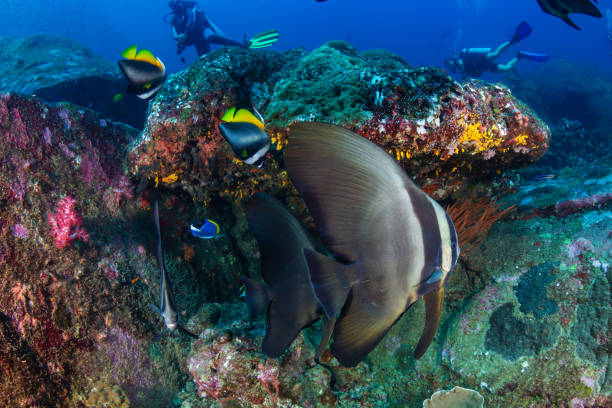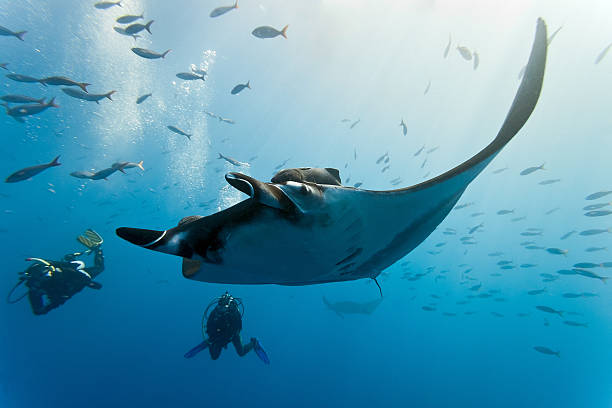Richelieu Rock is a world-renowned dive site located in the Andaman Sea, about 18 kilometers east of the Surin Islands and approximately 200 kilometers northwest of Phuket, Thailand. It is widely regarded as one of the best dive sites in Thailand and offers an incredible underwater experience. Here’s some information about diving at Richelieu Rock:
- Location and Topography: Richelieu Rock is a submerged pinnacle or seamount that rises from the depths of the sea to just below the surface. It is named after the French naval officer and explorer Jacques-Yves Cousteau’s favorite dive site, named after Cardinal Richelieu. The rock formation is covered in soft corals, sea fans, and anemones, creating a vibrant and colorful underwater landscape.
- Marine Life: Richelieu Rock is known for its incredible biodiversity and is often referred to as the “jewel of the Andaman.” The site is home to a vast array of marine life, including schools of barracudas, trevallies, and snappers. Divers have the opportunity to encounter various species of moray eels, lionfish, scorpionfish, and anemonefish. Richelieu Rock is particularly famous for its population of whale sharks, which are often spotted between February and April, although sightings can occur throughout the year.
- Coral Reef: The rock’s structure is covered in an abundance of corals, including both hard and soft varieties. The colorful corals provide a habitat for numerous marine creatures, from tiny shrimps and nudibranchs to larger fish species. The reef is also home to a variety of critters and macro marine life, making it a paradise for underwater photographers.
- Diving Conditions: The conditions at Richelieu Rock can vary, but it generally offers good visibility, ranging from 15 to 30 meters (50 to 100 feet) or more. The water temperature typically ranges between 27-30°C (80-86°F), making it suitable for diving with a wetsuit or thin rash guard. Currents can vary from mild to strong, and it is advisable for divers to have some experience to fully enjoy the site.
- Liveaboards: Due to its distance from the mainland, Richelieu Rock is often visited as part of liveaboard diving trips. Liveaboards offer the advantage of spending multiple days diving in the area and exploring various dive sites in the region. This allows divers to fully immerse themselves in the underwater beauty of Richelieu Rock and the surrounding islands.
- Season and Accessibility: Richelieu Rock is accessible primarily by liveaboard trips departing from Phuket, Khao Lak, or the Similan Islands. The best time to visit is during the high season, which typically runs from November to April when the weather conditions are more favorable and visibility is generally better. The site can experience strong currents at times, so it is recommended for divers with some experience.
Diving at Richelieu Rock offers an unforgettable experience for divers of all levels. Its rich biodiversity, vibrant corals, and the potential for encounters with whale sharks make it a bucket-list dive site for many diving enthusiasts. It is essential to dive with a reputable dive operator that follows sustainable diving practices and respects the marine environment to ensure the preservation of this precious dive site for future generations.


